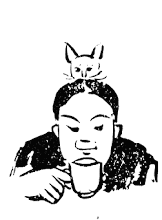Northrop Frye: Imagination
Northrop Frye, The Educated Imagination (Bloomington: Indiana University Press, 1964), 102-103.
Literature, then, is not a dream-world: it’s two dreams, a wish-fulfillment dream and an anxiety dream, that are focused together, like a pair of glasses, and become a fully conscious vision. Art, according to Plato, is a dream for awakened minds, a work of imagination withdrawn from ordinary life, dominated by the same forces that dominate the dream, and yet giving us a perspective and dimension on reality that we don’t get from any other approach to reality. So the poet and the dreamer are distinct, as Keats says. Ordinary life forms a community, and literature is among other things an art of communication, so it [Page 103] forms a community, too. In ordinary life we fall into a private and separate subconscious every night, where we reshape the world according to a private and separate imagination. Underneath literature there’s another kind of subconscious, which is social and not private, a need for forming a community around certain symbols, like the Queen and the flag, or around certain gods that represent order and stability, or becoming and change, or death and rebirth to a new life. This is the myth-making power of the human mind, which throws up and dissolves one civilization after another.


没有评论:
发表评论